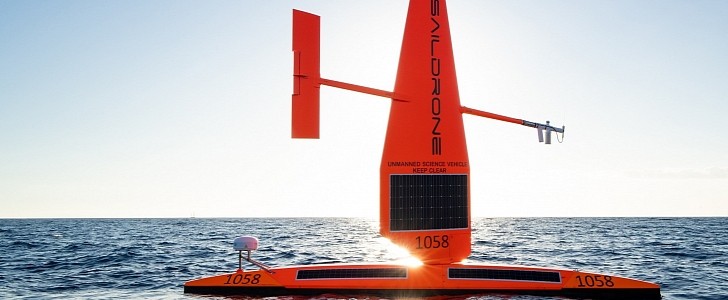San-Francisco-based USV (uncrewed surface vehicle) manufacturer Saildrone recently announced that it landed one of the largest orders for unmanned vehicles in the survey sector.
The client it has to thank for that order is Sulmara Subsea, a company from Houston, Texas, which activates in the offshore energy sector as the only multi-platform USV operator to provide its services globally.
As per the recently signed contract between Sulmara and Saildrone, the latter has to deploy 10 of its Voyager ocean drones and operate them from remote centers in Glasgow, U.K., California, Florida, and Singapore.
The USVs will be used for survey and inspection applications and are meant to reduce the dependency on manned vessels in the global offshore energy sector, thus lowering the carbon footprint.
For those who are unfamiliar with Saildrone’s products, the company has released three models of USVs so far: Explorer, Voyager, and Surveyor. The Explorer is the smallest of the three, measuring 23 ft (7 m) in length and being powered by solar and wind energy. The Surveyor is the largest model, measuring 72 ft (22 m) in length. Just like the Voyager, it's a diesel/electric ocean drone.
At 33 ft (10 m) long, the Voyager is the newest model in the Saildrone’s lineup, sitting right in the middle in terms of size. It is great for survey operations, being able to deliver long-duration mapping surveys, and ocean data collection at depths up to 985 ft (300 m). The USV operates at a cruise speed of 5 knots and a sprint speed of 8 knots. Saildrone boasts of the ocean drone having an operational endurance of up to 90 days.
Saildrone claims its uncrewed surface vehicles are a more cost-effective solution than traditional, crewed systems, and they are multi-purpose tools that can be of great help. They can create high-resolution maps of the seabed, which facilitate sustainable aquaculture and offshore energy.
But these ocean drones can be used for other applications as well. For instance, one of the company’s USVs made the global headlines back in October when it captured the world’s first video from inside a category 4 hurricane (Sam). In order to do so, it had to venture right into the eye of the hurricane and face waves that were up to 50 ft (15 m) high and winds that were stronger than 120 mph (193 kph).
As per the recently signed contract between Sulmara and Saildrone, the latter has to deploy 10 of its Voyager ocean drones and operate them from remote centers in Glasgow, U.K., California, Florida, and Singapore.
The USVs will be used for survey and inspection applications and are meant to reduce the dependency on manned vessels in the global offshore energy sector, thus lowering the carbon footprint.
For those who are unfamiliar with Saildrone’s products, the company has released three models of USVs so far: Explorer, Voyager, and Surveyor. The Explorer is the smallest of the three, measuring 23 ft (7 m) in length and being powered by solar and wind energy. The Surveyor is the largest model, measuring 72 ft (22 m) in length. Just like the Voyager, it's a diesel/electric ocean drone.
At 33 ft (10 m) long, the Voyager is the newest model in the Saildrone’s lineup, sitting right in the middle in terms of size. It is great for survey operations, being able to deliver long-duration mapping surveys, and ocean data collection at depths up to 985 ft (300 m). The USV operates at a cruise speed of 5 knots and a sprint speed of 8 knots. Saildrone boasts of the ocean drone having an operational endurance of up to 90 days.
Saildrone claims its uncrewed surface vehicles are a more cost-effective solution than traditional, crewed systems, and they are multi-purpose tools that can be of great help. They can create high-resolution maps of the seabed, which facilitate sustainable aquaculture and offshore energy.
But these ocean drones can be used for other applications as well. For instance, one of the company’s USVs made the global headlines back in October when it captured the world’s first video from inside a category 4 hurricane (Sam). In order to do so, it had to venture right into the eye of the hurricane and face waves that were up to 50 ft (15 m) high and winds that were stronger than 120 mph (193 kph).





